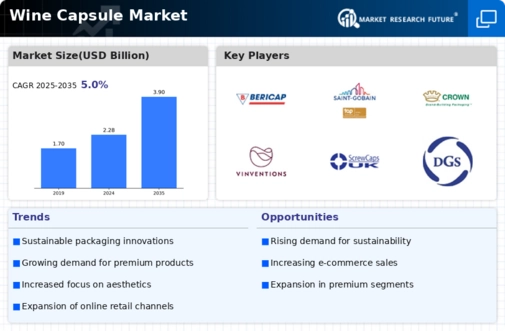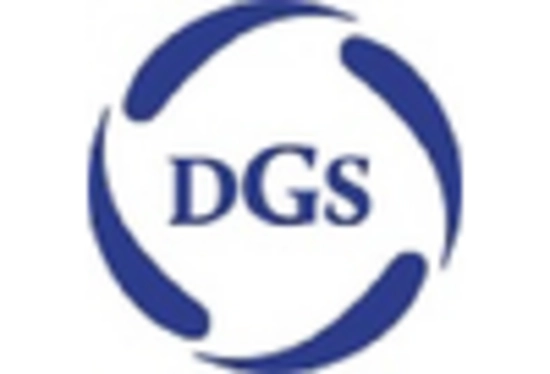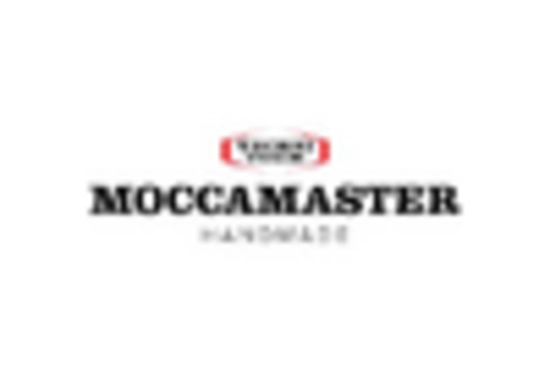The Wine Capsule Market is currently characterized by a dynamic competitive landscape, driven by innovation, sustainability, and strategic partnerships. Key players such as Amcor (AU), Guala Closures (IT), and Crown Holdings (US) are actively shaping the market through their distinct operational focuses. Amcor (AU) emphasizes sustainable packaging solutions, aligning with global trends towards eco-friendliness. Guala Closures (IT) has positioned itself as a leader in technological advancements, particularly in smart closures that enhance user experience and product integrity. Crown Holdings (US) is leveraging its extensive distribution network to expand its market reach, focusing on regional diversification and customer-centric solutions. Collectively, these strategies contribute to a moderately fragmented market, where innovation and sustainability are pivotal in maintaining competitive advantage.
In terms of business tactics, companies are increasingly localizing manufacturing to reduce lead times and enhance supply chain efficiency. This approach not only mitigates risks associated with The Wine Capsule Market demands. The competitive structure of the Wine Capsule Market appears to be moderately fragmented, with several key players exerting influence through their unique offerings and operational strategies. The interplay between these companies fosters a competitive environment where agility and adaptability are crucial for success.
In August 2025, Guala Closures (IT) announced the launch of a new line of biodegradable wine capsules, marking a significant step towards sustainability in the packaging sector. This initiative not only aligns with consumer preferences for environmentally friendly products but also positions Guala Closures as a frontrunner in sustainable packaging solutions. The strategic importance of this move lies in its potential to attract eco-conscious consumers and enhance brand loyalty, thereby solidifying Guala's market position.
In September 2025, Crown Holdings (US) expanded its manufacturing capabilities in Europe by acquiring a local packaging firm. This acquisition is expected to streamline operations and enhance Crown's ability to meet the growing demand for wine capsules in the region. The strategic significance of this action is multifaceted; it not only increases production capacity but also strengthens Crown's foothold in a competitive market, allowing for greater market penetration and customer engagement.
In July 2025, Amcor (AU) entered into a strategic partnership with a leading wine producer to develop customized capsule solutions that enhance product preservation. This collaboration underscores Amcor's commitment to innovation and customer-centricity, as it seeks to provide tailored solutions that meet specific client needs. The implications of this partnership are profound, as it not only reinforces Amcor's market position but also highlights the increasing importance of collaboration in driving innovation within the industry.
As of October 2025, the Wine Capsule Market is witnessing a shift towards digitalization and sustainability, with companies increasingly integrating advanced technologies into their operations. The rise of AI and data analytics is transforming how companies approach production and customer engagement, enabling more efficient processes and personalized experiences. Strategic alliances are becoming more prevalent, as companies recognize the value of collaboration in navigating the complexities of the market. Looking ahead, competitive differentiation is likely to evolve, with a pronounced shift from price-based competition to a focus on innovation, technology, and supply chain reliability. This transition suggests that companies that prioritize these elements will be better positioned to thrive in an increasingly competitive landscape.

















Leave a Comment